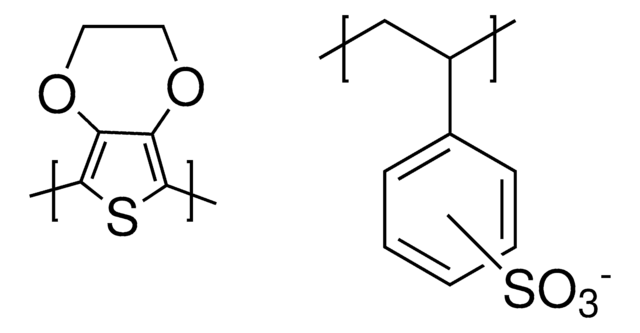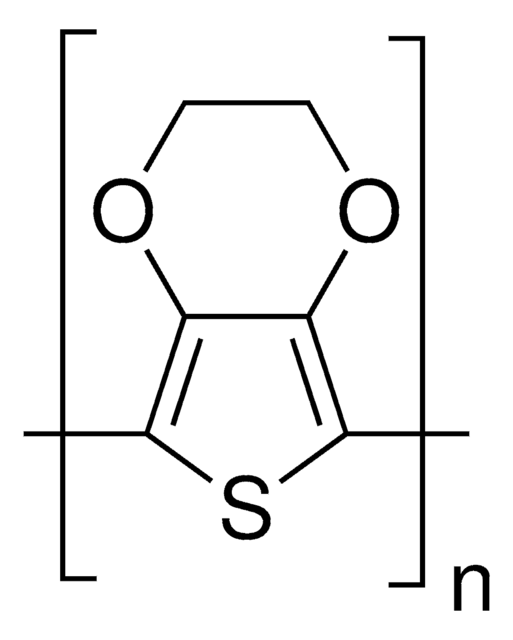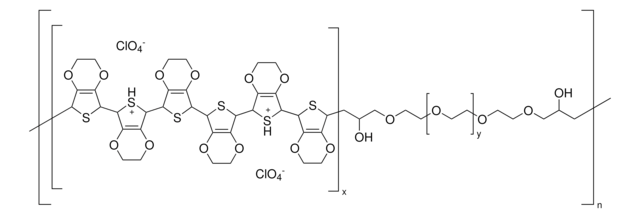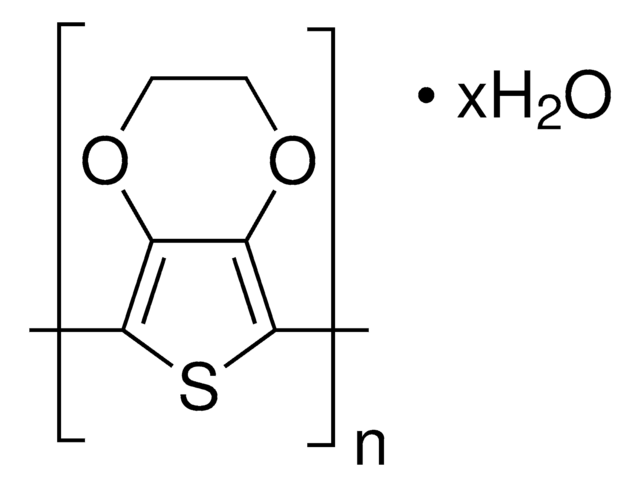768650
Poly(3,4-ethylenedioxythiophene)-poly(styrenesulfonate)
5.0 wt. %, conductive screen printable ink
Sinônimo(s):
Orgacon™ EL-P-5015, PEDOT:PSS, Poly(2,3-dihydrothieno-1,4-dioxin)-poly(styrenesulfonate)
About This Item
Produtos recomendados
Nível de qualidade
Formulário
paste
características do produto alternativo mais ecológico
Design for Energy Efficiency
Learn more about the Principles of Green Chemistry.
sustainability
Greener Alternative Product
concentração
5.0 wt. %
resistência
≤130 Ω/sq
pH
1.5-2.0
viscosidade
≥50,000 mPa.s(20 °C)
categoria alternativa mais ecológica
temperatura de armazenamento
20-25°C
Procurando produtos similares? Visita Guia de comparação de produtos
Descrição geral
- low band gap
- good optical properties
- high conductivity
- low redox potential
- easy processing
- tunable film forming ability
Aplicação
Curing temp. 130°C during 3 min
Informações legais
Palavra indicadora
Danger
Frases de perigo
Declarações de precaução
Classificações de perigo
Eye Dam. 1 - Skin Irrit. 2
Código de classe de armazenamento
10 - Combustible liquids
Classe de risco de água (WGK)
WGK 3
Ponto de fulgor (°F)
208.0 °F
Ponto de fulgor (°C)
97.77 °C
Escolha uma das versões mais recentes:
Já possui este produto?
Encontre a documentação dos produtos que você adquiriu recentemente na biblioteca de documentos.
Os clientes também visualizaram
Artigos
A detailed article on conducting polymer materials for flexible organic photovoltaics (OPVs) applications.
Find advantages of inorganic interface layer inks for organic electronic & other applications.
The emerging field of printed electronics requires a suite of functional materials for applications including flexible and large-area displays, radio frequency identification tags, portable energy harvesting and storage, biomedical and environmental sensor arrays,5,6 and logic circuits.
Progress in Organic Thermoelectric Materials & Devices including high ZT values of >0.2 at room temperature by p-type (PEDOT:PSS) & n-type (Poly[Kx(Ni-ett)]) materials are discussed.
Global Trade Item Number
| SKU | GTIN |
|---|---|
| 768650-25G | 4061833400074 |
Nossa equipe de cientistas tem experiência em todas as áreas de pesquisa, incluindo Life Sciences, ciência de materiais, síntese química, cromatografia, química analítica e muitas outras.
Entre em contato com a assistência técnica







